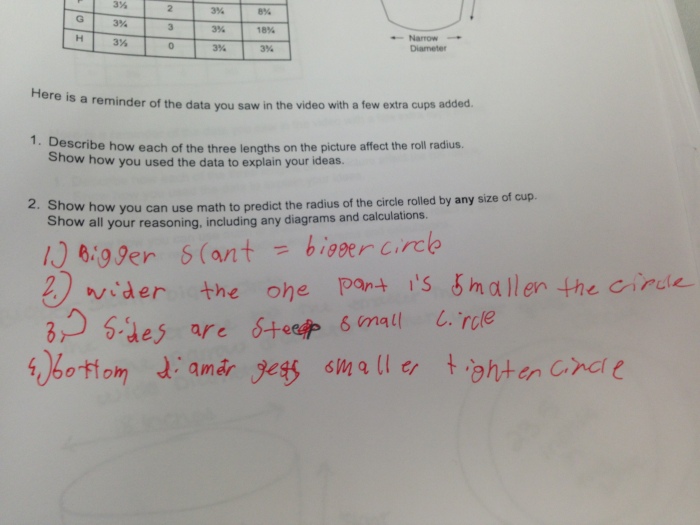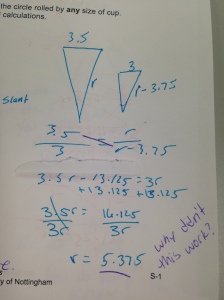I assigned this as a final project for my geometry classes. I wanted to see (and I wanted students to see) how well they could apply their mathematical skills to real world applications. I struggle with being less helpful, while keeping students from giving up, so i really studied all of the suggested questions that go with this lesson described by the Mathematics Assessment Project. I did not follow the lesson exactly as designed, but instead adapted it for my students. I broke the project down over four 50 minute class periods:
Day 1: Introduce activity, students work in pairs: turn in all thoughts & notes for feedback at end of class. This evening I replied with next steps / questions to keep students making progress the next day.
Day 2: Time to work, select students to informally present their noticing’s so far. Introduce the cup calculator for students to study patterns and test hypotheses.
Day 3: Students analyze sample solutions, then begin revising their own work.
Day 4: Final work day & reflections, discussions, presentations
Next year I’d like to add time at the beginning for noticing & wondering & individual student work before they begin working in pairs. My fear is that many students will not even try just because they are not sure where or how to start.














